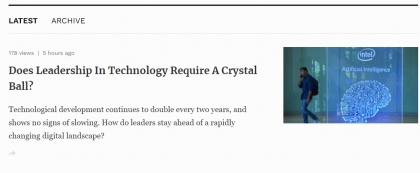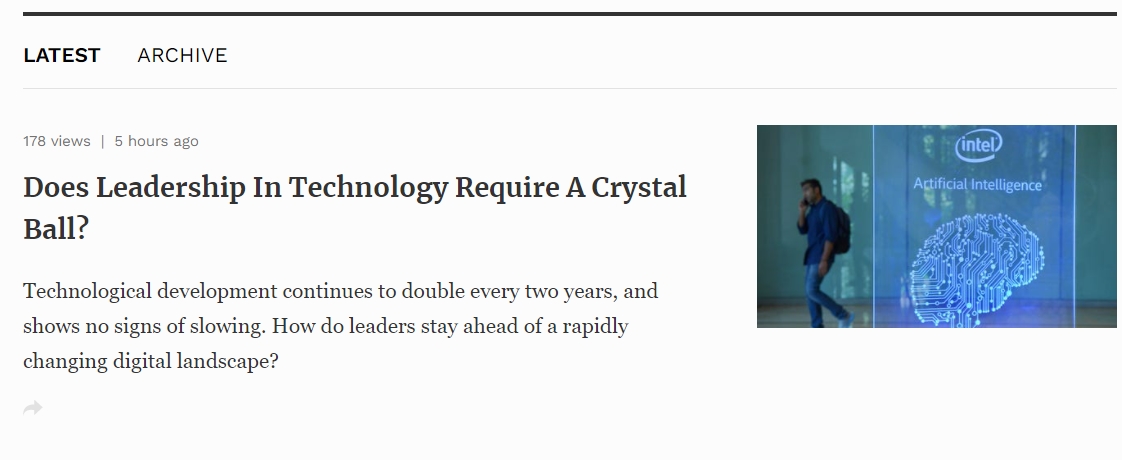
KAIST 신소재공학과 석좌교수 겸 산학협력센터장 이건재 교수의 (주)프로닉스가 Forbes LEADERSHIP STRATEGY 게재되었습니다.
Does Leadership In Technology Require A Crystal Ball?
Gordon Moore famously declared that the number of transistors in a densely populated circuit would double every year over the next ten years. When asked in a 2015 interview how he came up with this number, he admitted to drawing “a wild extrapolation.”
He amended his statement in 1975 to say that the number of transistors would double every two years, not one. Since then, what is now known as “Moore’s Law” has become a self-fulfilling prophecy, as transistor companies characteristically target this periodic doubling.
46 years later it still rings true. Technological development continues to double every two years, and shows no signs of slowing. It makes sense then, in an effort to keep ahead of the Joneses (or the Metas and the Googles), that some promising technological developments fell on deaf ears.
Take Google Glass for instance. Priced out of reach without a clear benefit, Google Glass crashed and burned. Remember Segway? What once was touted as a transportation marvel is now relegated to overpriced do-it-yourself tours for vacationers with time and money to burn.
“When it comes to technology, I think the question always is why,” says Jeremy McKane of Fronics, the creator of a voice sensor that is up to 22 times more sensitive than the current market standard, the MEMS microphone. Especially when trying to hit a constantly moving target. Is new technology solving a problem, or is it technology for technology’s sake — a solution looking for a problem?
MEMS Microphones versus Fronics
Digital MEMS (short for Micro-Electro-Mechanical Systems) microphones are used in electronic devices such as cell phones, computers, tablets, and hearing aids.
“Why would we want to innovate something that seemingly worked for the last 70 years or so?” asks Kisoo Kim, CEO of Fronics. Because new technology demands it. Sure, MEMS mics can record and playback sound. That’s what they were built for. But amid the accelerating development of artificial intelligence (AI), they fall short. MEMS microphones were “not invented for communication with a machine.
“The most important difference between our sensor and the MEMS microphone is that our sensor uses resonance. It can detect the human voice up to eight times further away from the source. We also have seven channels, because when the AI machine has to identify people, it needs as much information about the voice as it can get.
“MEMS microphones have only one channel, so the information that it gets is not enough to differentiate people’s voices. When you talk with somebody, you recognize who you are speaking with, and when you speak with the AI machine, the machine also has to recognize who it is speaking with at times, such as with AI security.
“The Fronics sensor is designed like the human ear. It's the exact same concept. It allows us to get a really clear, concise signal. I hope in the future when we talk to machines when I say take me to Wall Street, it doesn't take me into the Hudson River or worse. Maybe there's someone else in the car who wants to go somewhere else. It’s important for the microphone to be able to know which voice is mine because I'm the owner and I'm authenticated. This is a huge aspect of voice recognition that's really left to the imagination. I feel like we've missed the mark as a collective human body to really make this a reality. What Fronics has done is made something as close as possible that allows machines to hear just like humans do.”.....


